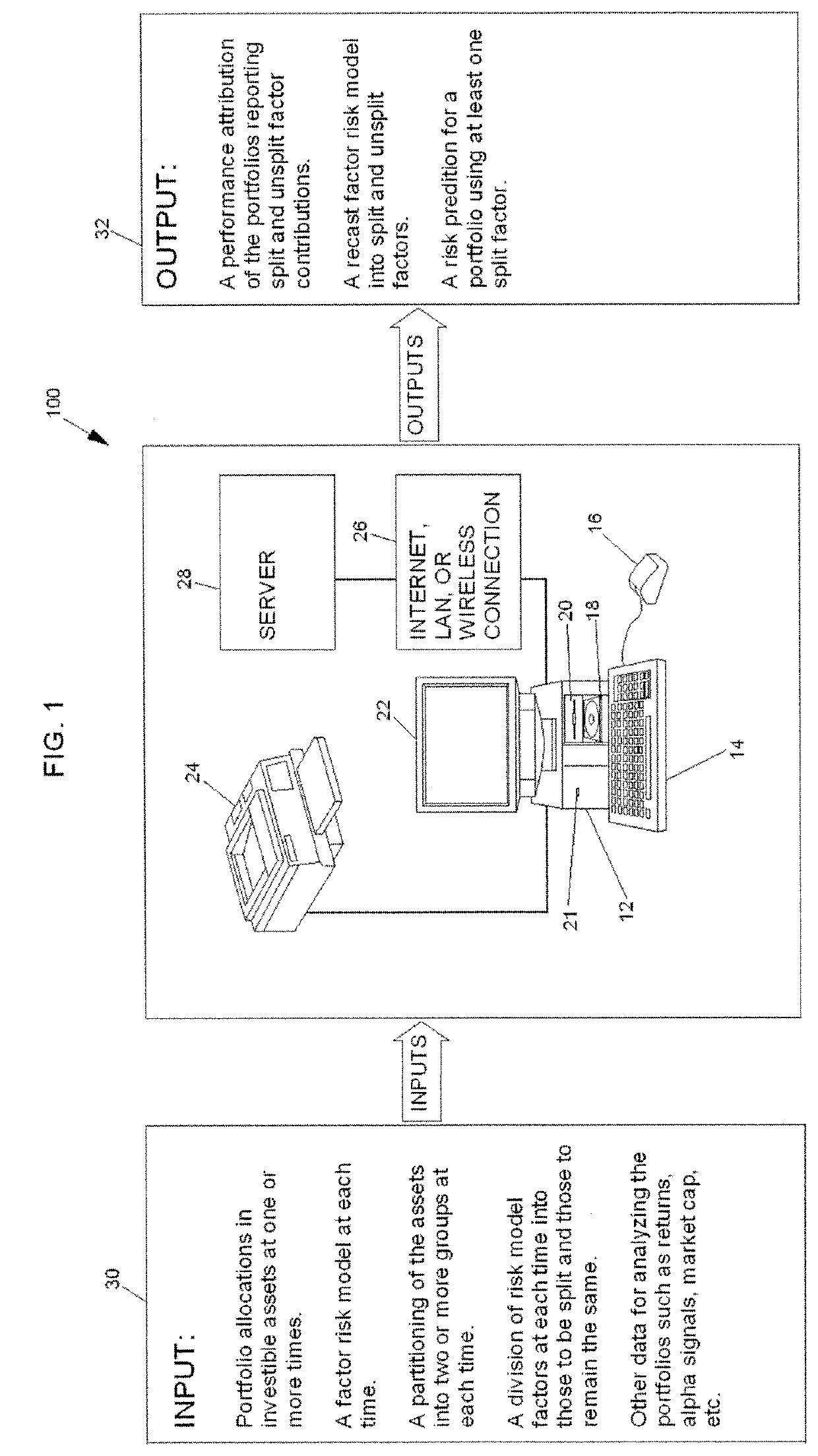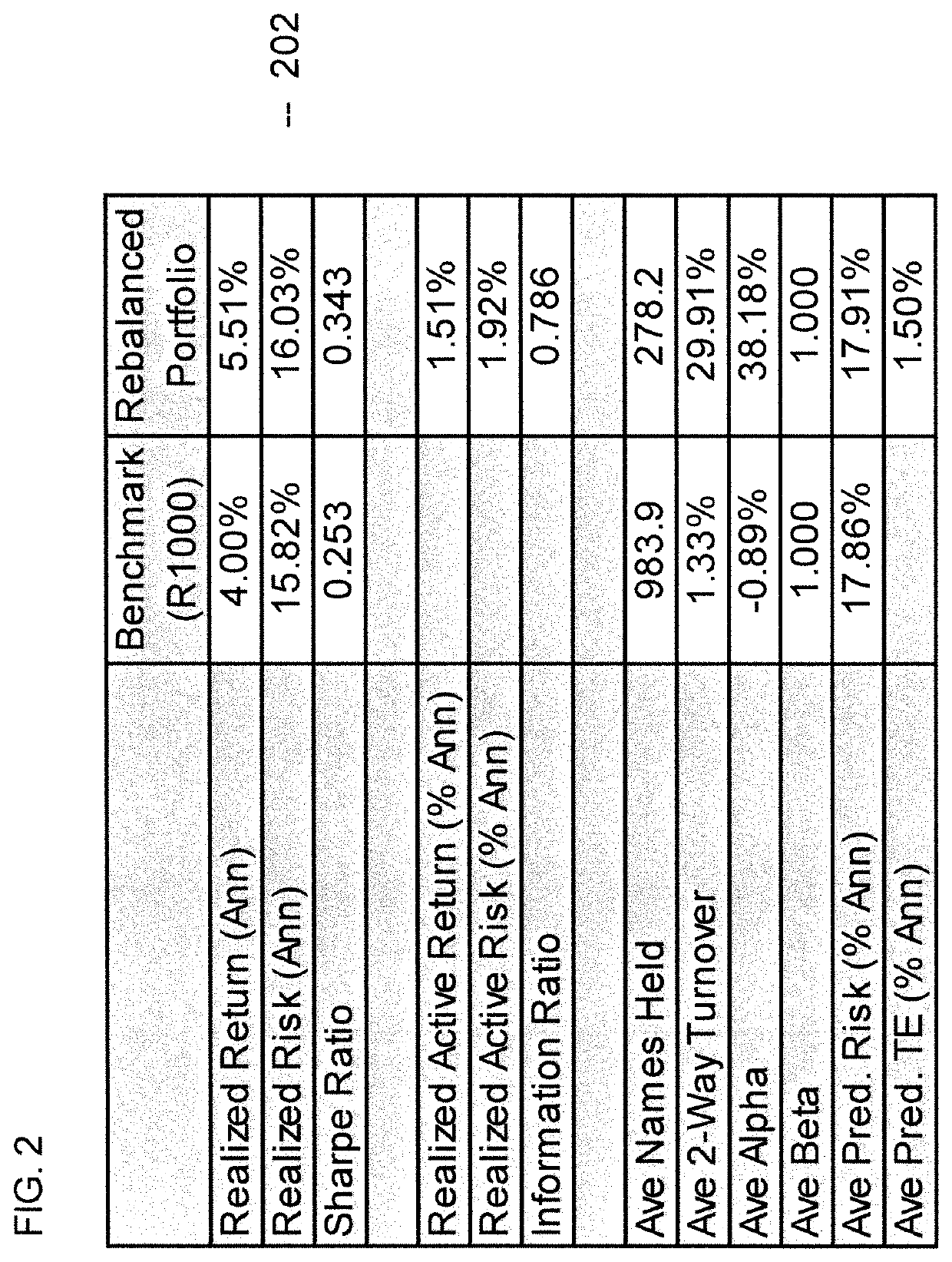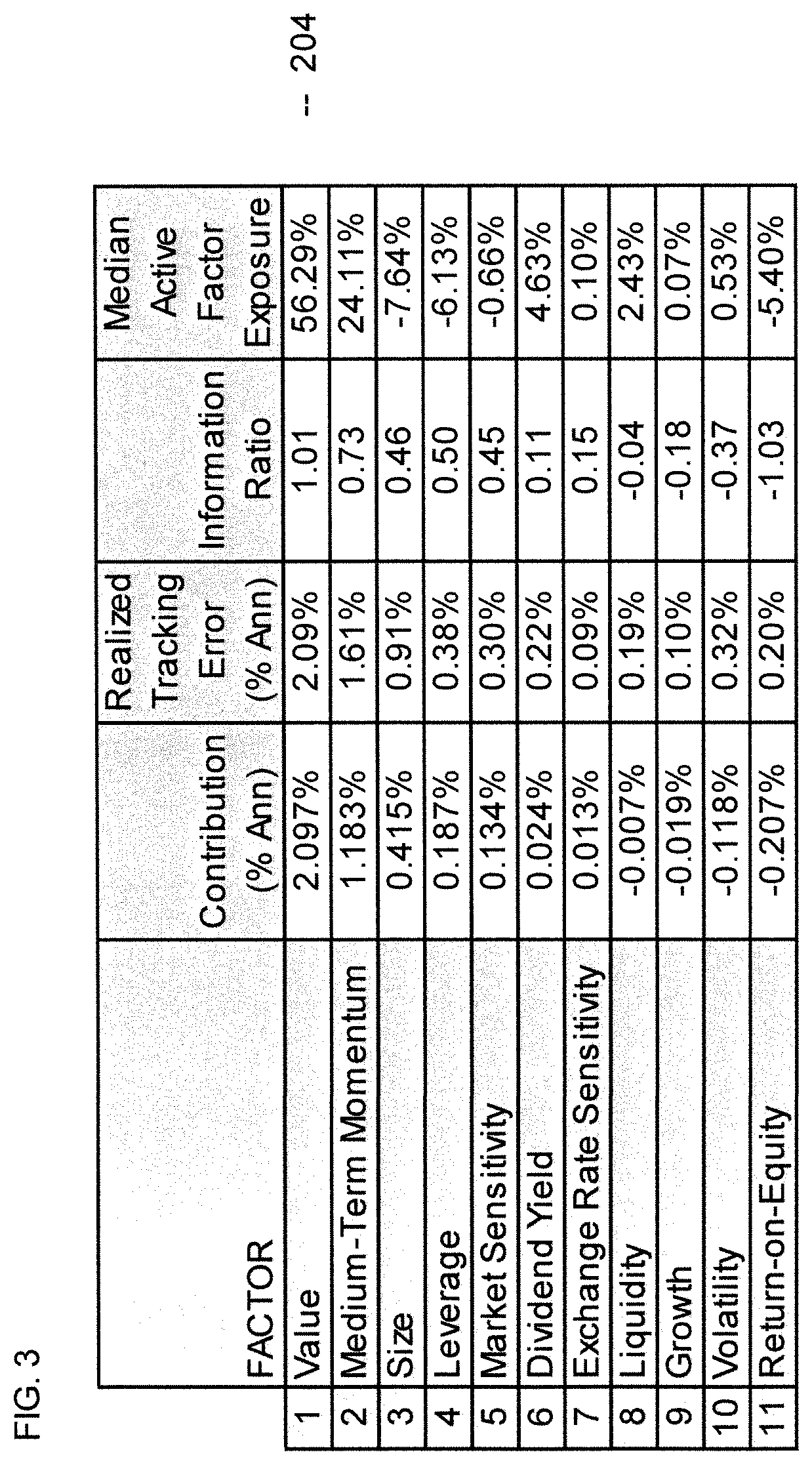Risk Factor Splitting
a risk factor and factor-based performance technology, applied in the field of factor-based performance attribution results, can solve the problems of not being affordable for all portfolio managers, permissible factors must meet stringent requirements, and substantial investments of time, man-power and computer resources, so as to improve the performance of the portfolio and facilitate the effect of changing in practi
- Summary
- Abstract
- Description
- Claims
- Application Information
AI Technical Summary
Benefits of technology
Problems solved by technology
Method used
Image
Examples
Embodiment Construction
[0058]The present invention may be suitably implemented as a computer based system, in computer software which is stored in a non-transitory manner and which may suitably reside on computer readable media, such as solid state storage devices, such as RAM, ROM, or the like, magnetic storage devices such as a hard disk or solid state drive, optical storage devices, such as CD-ROM, CD-RW, DVD, Blue Ray Disc or the like, or as methods implemented by such systems and software. The present invention may be implemented on personal computers, workstations, computer servers or mobile devices such as cell phones, tablets, IPads™, IPods™ and the like.
[0059]FIG. 1 shows a block diagram of a computer system 100 which may be suitably used to implement the present invention. System 100 is implemented as a computer or mobile device 12 including one or more programmed processors, such as a personal computer, workstation, or server. One likely scenario is that the system of the invention will be impl...
PUM
 Login to View More
Login to View More Abstract
Description
Claims
Application Information
 Login to View More
Login to View More - R&D
- Intellectual Property
- Life Sciences
- Materials
- Tech Scout
- Unparalleled Data Quality
- Higher Quality Content
- 60% Fewer Hallucinations
Browse by: Latest US Patents, China's latest patents, Technical Efficacy Thesaurus, Application Domain, Technology Topic, Popular Technical Reports.
© 2025 PatSnap. All rights reserved.Legal|Privacy policy|Modern Slavery Act Transparency Statement|Sitemap|About US| Contact US: help@patsnap.com



